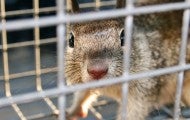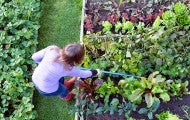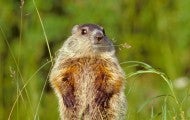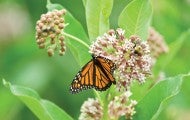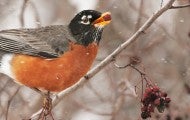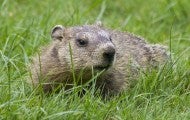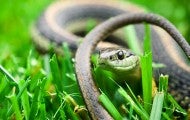They were like moths to a flame or, more accurately, butterflies to a native plant. No sooner had I unloaded two joe-pye weed perennials from my car last August than three tiger swallowtails dive-bombed the pots, as if to validate my purchase. If only my fellow shoppers knew what they were missing...
A raccoon in the chimney, a groundhog under the shed, a skunk under the back porch … when confronted with wildlife living up-close in their own homes or backyards, well-meaning but harried homeowners often resort to what they see as the most humane solution—live-trapping the animal and then setting...
It starts out mildly enough: Heading to work on the subway, you realize you forgot your wallet. No big deal, you think. I’ll borrow money to get home. Soon the lights go out and the train hurtles toward the sky, speeding through the atmosphere. Time passes—it’s hard to tell how long. The subway is...
Pop quiz: What’s the best way to help butterflies in your backyard? If you answered “Plant butterfly bush,” you’re in good company. A recent survey of my gardening friends elicited the same response from more than a few. It’s easy to understand why: Aside from its self-reinforcing moniker, the plant...
WASHINGTON - The Humane Society of the United States released today the results of a disturbing undercover investigation into two wildlife killing contests in Frederick County and in Waldorf, Maryland. Investigators documented the judging portions of the events, with participants lining up rows of...
The suspect creeping up near my front fence was a tough character—broad-leafed and thick-stemmed and threatening to invade my property and swallow it whole if I didn’t act fast. There was no hesitation that summer morning as I headed to work: Off with his head! It was a decision made all too easy by...
As monarch butterflies and hummingbirds headed south this fall, I dreamt of following my favorite snowbirds to Mexico and Central America. But I stayed home instead, where I have a window onto the spectacular world of winter wildlife: northern flickers tossing maple leaves with their beaks in search...
Snakes instill a deep-rooted fear in many people that few other animals can match. Even other animals seem to put them in a special category; many wild animals recognize snakes as threatening, and some birds and monkeys even have special vocalizations for sounding an alarm when a snake is seen. But...
They slip soundlessly through our landscapes, cloaked in a rainbow of colors and patterns that help them become one with bark, rocks, leaves and soil. Often the only sign of their existence is what they leave behind: ghostly shed skins imprinted with shapes of eyes and scales, traces of pigmentation...

